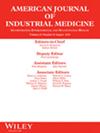Despite the utility of the beryllium lymphocyte proliferation test (BeLPT), distinguishing sarcoidosis, a disease of unknown etiology, from chronic beryllium disease (CBD), has long posed a diagnostic challenge. It is unclear if beryllium-exposed sarcoidosis cases (Be-exp-Sarc) are clinically distinct from CBD, or are misdiagnosed cases of CBD.
We performed a case-case study of 40 beryllium-exposed individuals diagnosed with Be-exp-Sarc compared to 40 frequency-matched CBD cases. We compared demographics, exposure, clinical, physical, and radiographic characteristics and HLA DBPI E69 genotype.
Compared to CBD, Be-exp-Sarc cases were diagnosed at a younger age, had lower lung function, were less likely to have normal radiographic imaging, were more likely to have massive adenopathy and extra-thoracic manifestations and were more likely to have been prescribed systemic immunosuppressive therapy. Be-exp-Sarc tended to have fewer years of beryllium exposure, but there were no significant differences in the amount of beryllium exposure. HLA DPBI E69 was present in 53% of Be-exp-Sarc cases, not different from the general population, versus 92% of CBD cases (p < 0.001).
While a number of differences were observed, the only absolute distinguishing features were lack of confirmed beryllium sensitization in Be-exp-Sarc and lack of extra-thoracic manifestations in CBD. These findings suggest that Be-exp-Sarc may be distinct from CBD, and beryllium or some other workplace exposure may possibly play an as yet to be defined etiologic role, although the possibility that these cases could be due to selection bias from heightened surveillance in beryllium workforces cannot be excluded.


